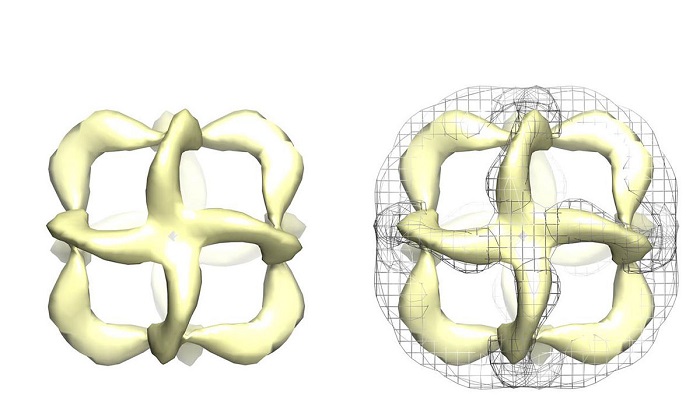But there’s a problem. DNA and RNA aren’t very stable in the body, due to our own protective enzymes, and DNA origami structures run the risk of falling apart before they can complete their job.
Now Alex Taylor and Philipp Holliger at the MRC Laboratory of Molecular Biology in Cambridge, UK, and their colleagues, have a solution: xenonucleic acids.
Known as XNAs, these contain the same genetic bases – adenine, thymine, guanine, cytosine and uracil – on which DNA and RNA rely for coding hereditary information. What’s different is the sugars used to string it together: XNA has a backbone made of artificial molecules.
In some forms of these XNAs, the synthetic backbones cause the genetic base pairs to form stronger bonds between each other than they do in DNA, so they should be less likely to break up in the body.
Grand nano designs
Until now, we haven’t been able to choose which structures XNAs can form. Now Taylor and Holliger’s team have designed two XNA templates that automatically fold into either a tetrahedron or an octahedron.
To test whether these shapes will last longer, the team immersed some of their XNA tetrahedra in samples of blood serum at body temperature. They were still intact after eight days, while tetrahedra made from DNA fell apart in just two days.
“One of the main challenges to medical use of DNA nanomaterials is their degradation when exposed to biological environments,” says Steve Perrault at Harvard University. “This new research shows that we’re able to engineer past that problem.
The team also found that they could combine DNA and XNA in the same origami design. Using a combination of different types of nucleic acid might let us build a variety of complex nanotechnologies. While XNA seems to be more stable, DNA origami has already been used to create tiny computers, for instance.
“It is exciting to imagine nanostructure designs making use of, say, flexible XNAs for moving parts, and rigid, more stable chemistries for scaffolding regions,” says Taylor.
More about:
















































